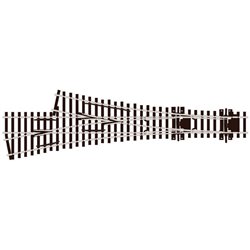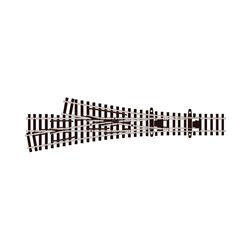The Class 60 is a heavy freight diesel-electric locomotive built for British Rail in the late 1980s and early 1990s....
No products
Product successfully added to your shopping cart
There are 0 items in your cart. There is 1 item in your cart.
Search Tips
Christmas and New Year
We are dispatching orders every weekday apart from Christmas Day, Boxing Day and New Year's Day.
If you order is time critical, select next day delivery at checkout.
The shop in Sandown is closed from 25th December, reopening on 30th December.
Where would I use an asymmetric 3-way turnout as opposed to a 3-way turnout?
An asymmetric 3-way turnout, also known as a Y-switch, is a type of turnout that diverges into three tracks but with one of the tracks diverging at a different angle than the other two. This creates a "Y" shape, with one branch diverging off to the side at a different angle than the other two.
The main advantage of an asymmetric 3-way turnout over a regular 3-way turnout is that it allows for greater flexibility in track design and routing. It can be used in situations where a regular 3-way turnout would not fit due to space constraints or alignment issues. For example, an asymmetric 3-way turnout could be used to create a curved track layout that merges with a straight track or to allow trains to move from one line to another at an oblique angle.
In addition, an asymmetric 3-way turnout can also be used to create a more visually interesting and dynamic track layout. It can be used to create a track plan that is more challenging to operate, with more complex routing and switching movements. This last factor is especially pleasing for modellers who relish the challenge of designing and configuring a complex layout.
Overall, the use of an asymmetric 3-way turnout is a matter of personal preference and the specific requirements of the model railway layout. It can be utilised in situations where a regular 3-way turnout would not work or to create a more visually interesting and challenging track plan.
Click here to receive the tips weekly in your mailbox. You can unsubscribe at any time.









